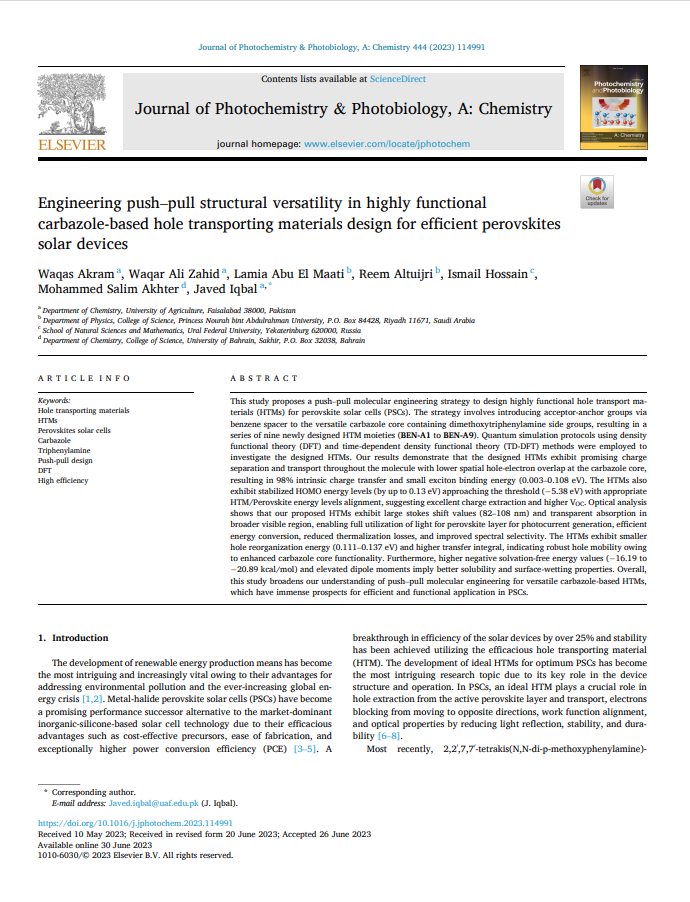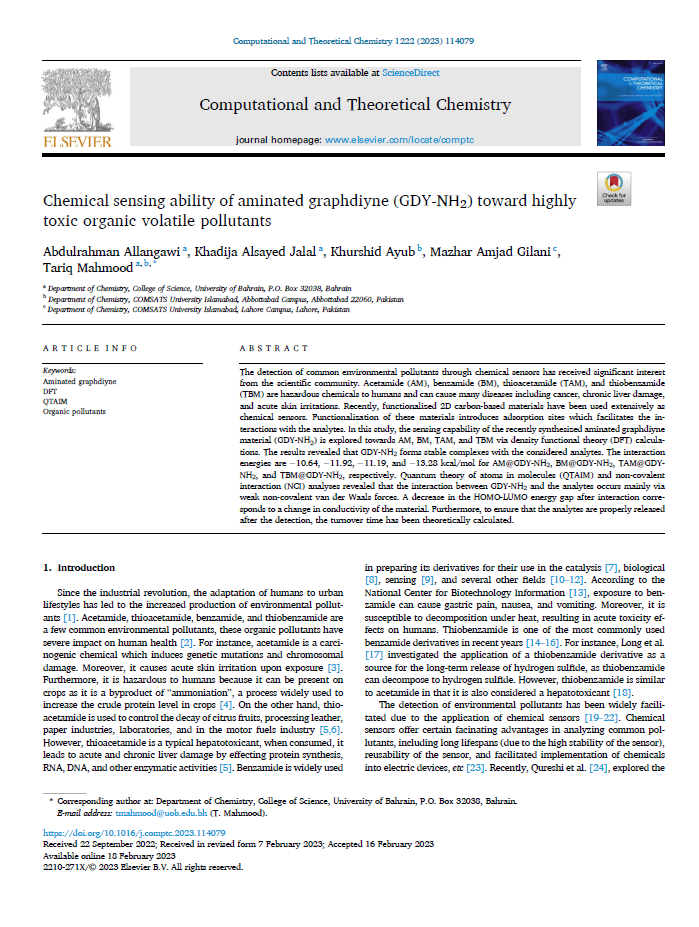وثيقة
Effects of hydrogen/halogen –edge termination on structural, electronic, and optical properties of planar silicene nanoribbons SiNRs
وكيل مرتبط
عنوان الدورية
Physica E: Low-Dimensional Systems and Nanostructures
دولة النشر
Kingdom of Bahrain
مكان النشر
sakhir, bahrain
الناشر
University of Bahrain
تاريخ النشر
2022
اللغة
الأنجليزية
الموضوع
الملخص الإنجليزي
ABSTRACT:
The effects of (hydrogen/halogen)–edge termination on the structural, electronic, and optical properties of
planar SiNRs with either zigzag (ZSiNRs) and armchair (ASiNRs) edges are investigated by means of DFT calculations. The obtained results show that X-edge termination is a new approach to tune and open the band gap in planar SiNRs, and exhibiting a metallic character. The density of states (DOS) analysis reveals a strong hybridization between halogen-p and edges Si-p states, which is not the case of H-s and edges Si-p states. The calculated charge density contours manifest the ionic nature of Si–X (X = H, F, Cl, Br, and I) bonds. However, the Si–Si bonds display a typical covalent bonding feature. The investigation of the optical properties for both polarizations indicates that 7-ASiNR-X and 5-ZSiNR-X exhibit strong optical anisotropy in infrared (IR), visible (VIS), and ultraviolet (UV) regions under both polarizations, making them promising candidates for optoelectronics and optical nanodevices such as polarization-sensitive photodetectors. Besides, for perfect planar ASiNR and ZSiNR, the strong absorbance peak of ε yy
2 (ω) has been found to occur at 0.32 (0.36) eV, respectively, suggesting that these compounds may be candidates for IR optoelectronic devices. The most dominant absorption peaks centred at 5.17 and 4.5 eV for ASiNR-H and ZSiNR-H systems, respectively, indicate a high absorbance in the UV range, making them prospective nanomaterials for photovoltaic devices.
المجموعة
المعرف
https://digitalrepository.uob.edu.bh/id/3d038b98-d63a-4b55-9338-8da12050e674
مواد أخرى لنفس الموضوع





